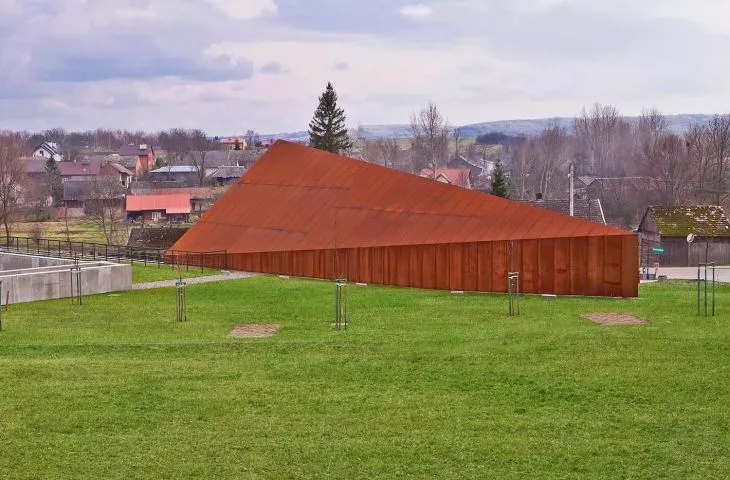From the archives of A&B - the best Polish projects of the last decade
[A&B 12'2016 original material]
The period of great turmoil in Europe was a time of examination of humanity for many. The Ulma family paid the highest price for it. Many years after the events in Markowa, they are still a symbol of those Poles who were ready to give up everything in the name of saving human life. The Museum of Poles Saving Jews during World War II, named after them, is an object-testimony that even in the most difficult moment of history, hope still exists.
Jozef Ulma, Umot ha-Olam - Righteous Among the Nations, his wife Wiktoria and their six children were executed by firing squad at the hands of German gendarmes on March 24, 1944 for helping three Jewish families, two of whom they took under their own roof. Of course, they were not the only Poles who meted out such cruel punishment for showing human impulses in a time of great turmoil and confusion, but it was their fate that became a recognizable symbol of the martyrdom of Poles murdered for helping Jews.
projection
© Nizio Design International
Although the couple has lived to be commemorated by being awarded Israel's highest honor by theYad Vashem (Yad Vashem) institute, and the Ulmas' beatification process has been underway since September 2003, until the Markowa museum was realized, it is difficult to speak in Poland of a tangible and so powerfully affecting commemoration of this heroic family and others like it. Yes, a monument commemorating the victims of the crime was unveiled in Markowa on the sixtieth anniversary of the crime, but as a stand-alone work it does not carry as much emotional charge as the new facility.
The museum is a moving realization that affects the viewer very strongly, through the intensity of light and shadow, form, material, its color and texture. Also by the way it is related to its surroundings. It is like an abstract work expressively displaying the complex reflections and feelings that accompanied its creation. However, the deep symbolism behind the geometric forms only finds an outlet when it comes into contact with the viewer.
cross-sections (from below): A-A, B-B and C-C
© Nizio Design International
The realization consists of several important elements: a plaza on the side of the road, opening to Markowa on one side, closed by the front elevation of the building on the other, and a wall on which the names of Poles who helped Jews during World War II are hung. Also in the floor there are illuminated tiles with the names, but these are dedicated to the Poles who paid the highest price for their help; from the part hidden under the greenery, containing the technical and office facilities of the institution, as well as a lecture room; from the green part, which still needs some time to grow, but commemorates the Ulma family by analogy to their orchard or referring to the gardens of Jad Waszem; "the house".
Not large for a museum object, but a sturdy block, with a triangular, sharp-edged base, although strongly minimalist in form, devoid of all detail clearly resembles a house. A processed one, but still a house. It is an echo of a story that took place here more than seventy years ago. The rather brutal way in which it bites into the ground is a very powerful metaphor.
The model of the Ulmas' house in the form of a cuboid is the focal point of the museum's exhibition space - both as the most important part of the exhibition, strongly affecting the viewer's imagination, and as a compositional dominant in the ascetic space of the hall
photo. © Nizio Design International
The building is the central part of the realization, binds the whole design idea into one coherent whole and is the most noticeable. The reinforced concrete structure is covered with fashionable and striking weathering steel, giving the object a twofold expression. On the one hand, the material's texture and character lend a certain austerity to the realization, while on the other hand, the reddish-brown color evokes domestic warmth. Although the object itself is very expressive and uses the language of symbols to express a lot, it also houses the essential part of the exhibition. There is a glass cuboid of about 40 sq. m., which is a symbolic replica of the real home of the Ulma family, containing the furnishings salvaged from the original building.
Despite its relatively small size, the Ulma Family Museum of Poles Saving Jews During World War II in Markowa is an object of exceptional historical and cultural potential. The sculptural, plastic and symbolic nature of the design concept raises the hope that the whole is in fact more than an exhibition site - it is an independent monument to the events and people it commemorates.
































